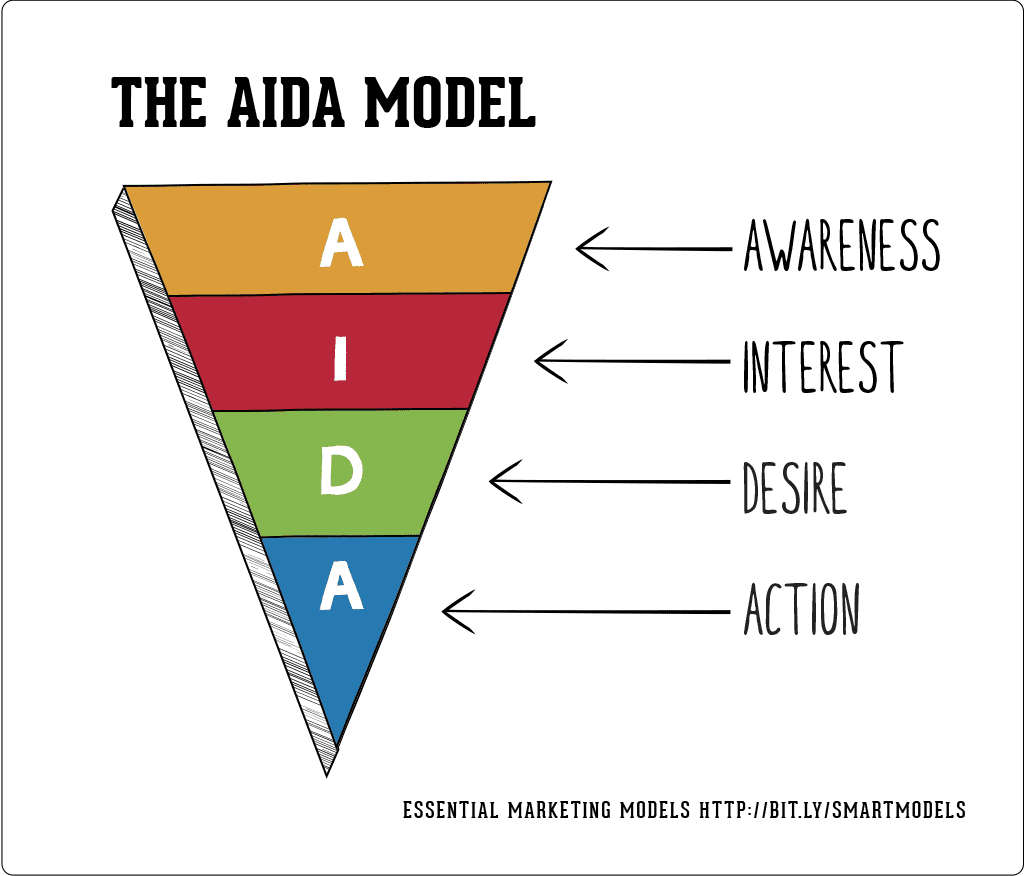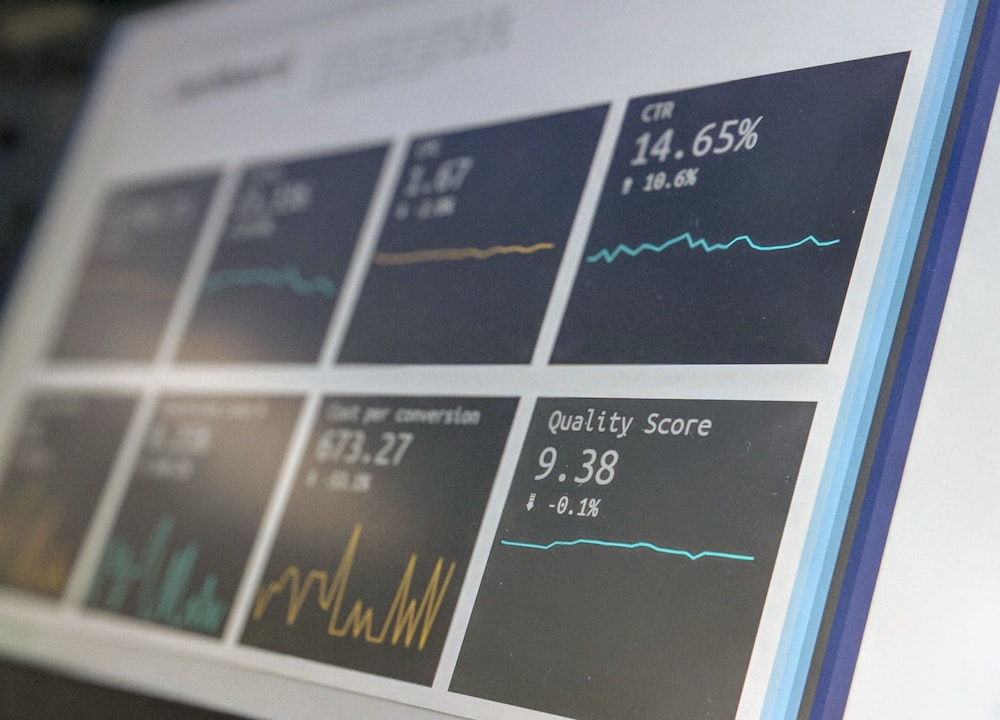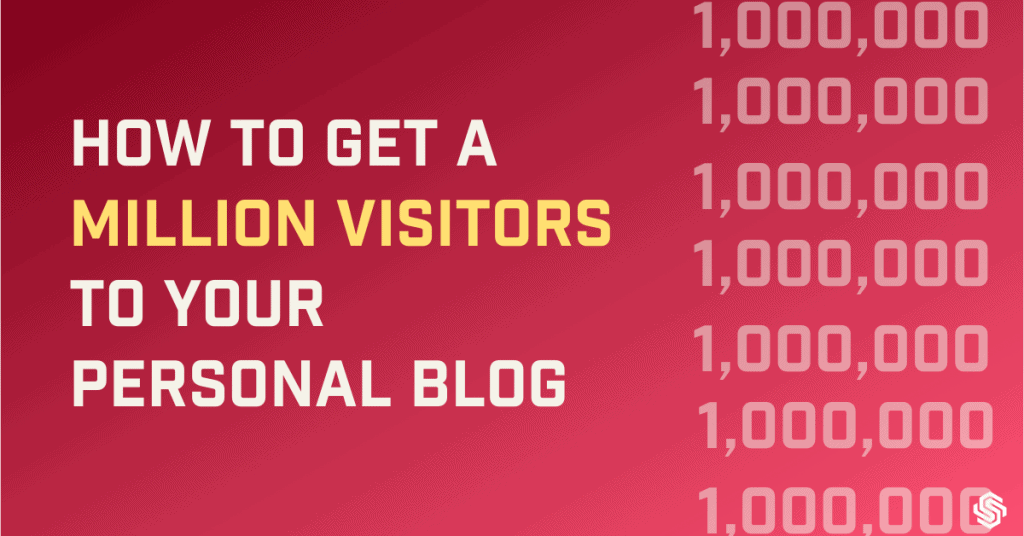“OPEN YOUR ANALYTICS!!”, she yelled even before I had opened my laptop.
Not exactly the kind of greeting I was hoping on a Monday, but I bought it.
“There are 6173 real-time visitors on the blog right now!”, she was still jumping.
I had never seen a number like that in real time analytics in my life and definitely wasn’t expecting it on a Monday morning.
But it was there, staring at me. Unbelievable.
6173
One of the blogs that our content writers had written and gone viral. We had put a lot of effort into it and that kind of explained her excitement and my disbelief, apart from the fact that there were 6173 visitors on the blog.
The blog ended up getting more than 500,000 visitors in less than a week.
This was easily one of the highlights of my career.
Instead of just drowning myself in joy I decided to understand the “WHY”. Why did the blog go viral?
I reverse engineered the viral blog and other blogs to understand aspects we should not be missing. A checklist or should I say – a process.
I thought I was lucky when I got those 500,000 visitors in less than a week but then I joined another startup in a similar industry.
I applied everything that I had understood from my experience and crafted a blog from scratch. We took it from 0 to 100,000 sessions in less than 6 months with just two content writers.
I replicated the same in yet another startup, with similar results in a completely different industry.
Whatever I have learned from my experience, I have presented to you here.
If you are a blogger, struggling to drive traffic to your personal blog, keep reading.
It’s going to be a long read but completely worth it.
Understanding Your Audience
Ladies and Gentlemen, the legendary Peter Drucker.
I can’t imagine of anyone putting it in a better way than how Peter Drucker has put it.
And this can very well be applied to blogging as well. Think about it.
The more you understand your audience, the more you understand their problems. The more you understand their problems, the better you can present your solution in an articulate manner which makes the audience look at you as an authority.
You need to understand your audience so well, the content basically should market itself.
But how do you understand your audience like the back of your hand?
Don’t worry I’ve got you covered.
- User Personas

If everybody is your audience, then nobody is your audience.
I hear this every time from people – “ My audience is anyone from the age of 21-55”
Your audience cannot be that wide. You have to be very focused on WHO you are writing to.
A good way to address this by using user personas. A user persona ( or a customer avatar ) is like a composite sketch of your audience. It can be real or fictional.
Imagine you are creating a Facebook profile for your ideal customer.
You would put in a name, age, gender, education, workplace and title, interests, hobbies, needs, problems, social setting and everything in between.
All of this information will help you identify what kind of a problem and stage of life he or she is and you craft the solution for them.
Now you will need to create more than 1 user personas.
Think about the extremes in your audience spectrum. If you take care of the extremes, everyone falling in the middle will be taken care of.
Go ahead and create your first user persona.
Another tip my co-founder Deepak Kanakaraju keeps advising is to imagine you are writing an email to that user persona. That really helps in keeping the focus and flow.
- Keyword Research

Typically speaking, when you hear the phrase keyword research, people are usually referring to finding keywords with enough search volume and low competition.
But let’s zoom out a little bit and try to look at the bigger picture.
Keyword research is essential audience research. It gives you insights on what people are collectively thinking or the kind of problems they are facing.
Keywords also give you insights into the intent behind their search and also has clues on what part of the customer journey that user is in.
Once you figure out the intent, depending on which part of the funnel the user is in, you can craft content around it.
This is, easily, one of the most useful, yet underrated audience research methods out there. It helps you quantify collective notions about your users’ problems.
Now, you can easily achieve this with the generous Keyword Tool you find in Google Ads. But if I were to place money on keyword research, it would be for Ahrefs.
- Quora

This is my other favourite when it comes to understanding your audience.
Now, strictly speaking, I don’t use it only for audience research. It definitely helps in understanding the questions people have regarding your topic.
But more importantly, it will help you identify gaps in the content and also what kind of content is being consumed better by users.
If you look at all the answers around your topic, you will notice that a few of them have higher upvotes and comments than the others.
This is a validation of the fact that the information provided is helpful and also the way in which the information is provided is more helpful.
Your job as a writer is to make the best piece of content out there around a particular topic. And for that, you need to identify the gaps and understand how your audience would prefer to consume it.
- Facebook Search

A simple yet effective method that usually gets missed in all the tools and chaos out there.
Facebook’s graph search is a pretty powerful tool when it comes to research.
Not only can you check out hashtags and all the important discussions happening around your topics, you can also use it create in depth user personas.
It gets even better, be
Google is not the only search engine you know 😉
- Competitors

This is a hack that can work pretty much in every aspect of digital marketing.
Don’t know what to do? Look at what the competitors are doing.
It’s a no brainer. They would have gone through a learning curve to see what works and scaled on what is working.
All you need to be doing is to reverse engineer their content and creating better content to offer to your audience.
Also, when I say competitors don’t strictly restrict yourself to direct competitors. There might be other players in a completely unrelated industry where you can draw inspiration from.
Pro tip: Always read the kind of comments and reviews people leave for your competitors. Helps you identify gaps and give you more ideas.
Identifying & Aligning Goals

I got a call from a leading real estate portal for consulting.
Their problem was very simple. They have content, they have traffic but their traffic is not converting.
The solution was glaringly obvious. Their content was not aligned with their business.
They were busy writing about the best place to biryani in town on a real estate related blog. I mean, come on!
But surprisingly, this is more common than you think it is. People get into content marketing just for the sake of it. And it ends up hurting them. ( Just like relationships. Ouch )
So how do you avoid this?
- Align Business Goals with content

It can be anything starting from brand awareness to lead generation to sales. But you should be clear from the get-go what any piece of content is going to do for you.
You combine what the audience wants to what you have to offer and that’s where the magic happens.
If the content is not aligned with your business and it’s goals, you will fall into the same trap of attracting useless traffic.
Your content has to guide them through making them aware of the solutions, invoking interest and creating the desire to take action.
If even one piece of this missing, your entire funnel will collapse. Dare I say, your entire marketing efforts will go down the drain.
- Assign the right KPIs

Once you have aligned your business goals you need to assign the right KPIs to figure out whether your content marketing efforts are helping you achieve your business goals.
If it’s brand awareness it could be the total number of sessions generated through content. If it is leads, you can check leads per piece of content. The same goes for sales.
What you will eventually notice is that, just because a particular blog is attracting a ton of traffic, doesn’t necessarily mean that it’s good. You need to look at the finer details like leads generated or sales achieved through these pieces.
The winner might very well surprise you. And this happens simply because your audiences are at different stages of the funnel and every piece of content addresses to different stages of the funnel.
- Short term or Long term results

The kind of results your content brings in also depends on the kind of channels you are focusing on bringing in the traffic.
If a certain piece of content is meant for search, then obviously it is going to take a lot more time to even get the needle moving. But once it does its mostly sustained free traffic.
On the other hand, social traffic is erratic with sharp spikes in traffic and then a lull. It literally behaves like waves.
And if you also have referral traffic, like guest posts then again, it might result in both a spike and a good amount of sustained traffic.
So if I were you, I would first start off with the search traffic and start working on the rest. That way you would have balanced out short term and long term goals and also iron out traffic spikes and a lack of it.
- Measure Performance with the right metrics

After you are done with all of that, you still need to figure how the content itself is performing.
I used to closely monitor just two metrics ( apart from the # of sessions of course )
Amplification Rate
Conversation Rate
Amplification Rate is just a fancy way of saying the number of shares on your post. But it is a very important metric.
If someone is sharing it on their wall or feed, it means how much value it has added to them. This also means, you have understood your audience well.
The icing on the cake is that your audience is going to bring in new audience and the cycle keeps continuing.
Conversation rate is basically the number of comments on your content.
Again, this is a reflection on how deeply you understand your audience. But the best part is that you are converting your piece of content into a conversation.
People are always opinionated. You just have to share a platform for them to share their opinions.
And hey, nobody complains about user generated content.
Irresistible Headlines

I really like this line from the movie Django Unchained.
“You had my curiosity, but now you have my attention”
This applies so well to headlines and your audience. Your audience is curiously lurking all over the internet looking for the next shiny thing.
And it’s the job of your headline to grab their attention.
A headline can literally make or break your content. The title is the first touch point your users are going to have, so you HAVE to make it count.
How do we do it?
- Understand your industry to understand your headline
It seems pretty obvious, this one, but the amount of times I see inappropriate titles baffles me.
It’s very simple, you can’t write like buzzfeed if you are a B2B company and you can’t write like a B2B company if you are buzzfeed.
And again, this all circles back to understanding your audience because at the end of the day the industry is a collective representation of your audience. And the context adds flavour to it.
So in essence, you need to choose the tonality and professionalism in your title based on the industry you operate in.
- Use different variety of headlines

There are multiple varieties of headlines and if you look around you will notice a pattern.
Here are a few examples
List Headline :
It’s pretty straightforward, the number of items you are covering in the list with an adjective.
Eg: 28 Epic Reasons you should watch The Office.
How to Headline:
Simple formula : How to + Action + Unique benefit
Eg: How to Rank Your Blog In 30 Days.
( Can you guess which is the action and unique benefit in the above title? )
The Question Headline:
Just ask a question to your audience but you need to be addressing them. So instead of “ What is the best way to become a digital marketer” you can rephrase by addressing your audience like this :
“ Do you know the best way to become a digital marketer?”
It becomes even more effective if you add a call to action to it
Authoritative Headline:
The Ultimate Guide to a Road Trip from India to Thailand
Here you are showcasing your authority and credibility right away. But ensure that you are actually living up to the expectations the headline is setting.
Otherwise, it’s just clickbait.
- Include the USP in the title

Again, an obvious one which a lot of people seem to miss.
Whatever might be the USP of the article highlight it in the headline if possible.
As you might have guessed already, this only works if you really have a unique selling proposition.
For eg: We analyzed 1 million websites. Here’s what we’ve learned.
- Include the keywords
Even if it’s not an article you are writing for purely SEO , do some basic keyword research and include keywords in your headline.
You will be surprised to see the kind of long tail keywords it will start ranking for, especially if it performs well in social media.
You will start getting a steady stream of traffic from these keywords and rest assured, you will be unearthing new audience.
- Come up with 10/15/20 headlines

This is a trick I learnt from this website called Viral Nova.
Before they publish an article, they come up with at least 25 headlines for the blog post and then choose the best one out of it.
When I actually did it I realized how important and beneficial it can be.
When you write at least 10 headlines and take a step back and look at them, you can mix and match and create very impactful headlines.
And if you are sticking with only one headline, you would never know the true potential of your blog and the headline.
You can take it a notch higher by A/B testing between multiple headlines and sticking to the best performing one.
- Check for benchmarks in the industry
Just type in your keywords in Google and check out all the headlines that are there.
You will get tons of ideas!
And let’s face it, one of the reasons they are there on the first page is because of good CTRs and where do good CTRs come from? Great headlines.
Writing and Structuring Content

Now, this is a place where many of you hit a roadblock.
Before we proceed I would like to address this resistance.
I would like to remind you that, in the history of mankind the barrier to entry for creating content is at the lowest. There is no reason why you should not be creating content. Be it text, audio, music, video or kind of audio-visual format.
If fear of failure, judgment or negative feedback is what is stopping you, then let me remind you are better than that. Let go
You have taken the initiative. That’s all that matters.
And that’s a win in itself.
Now let’s get down to business, shall well?
- Stop writing Essays

Blame it on our education or whatever but the biggest problem with people writing online is, they automatically switch to writing essays.
The web is not the same as books or physical reading. People behave differently online, not to mention the million distractions they have.
Your job is to hear them and talk to them. Understand their problems and give solutions.
Imagine a friend walking up to you for advice on something. Would you start talking like how you would write an essay?
That’s what I thought.
So keep it conversational. Like mentioned before, pretend you are writing an email to your friend and you are having a conversation with that person.
- Use Sub headings
I hope you are with me when I say people behave differently on the web. We have already demonstrated in the previous point.
This applies to the way they are going to consume your content.
If you assume they are going to read then you are wrong.
People online scan and consume content.
Your subheadings act like headlines for the content that follows.
Again, it needs to grab their attention while they are scanning through the content and get them to read it.
That’s where the magic is.
So use sub headings wisely and it would be even better if you treat them like headlines.
- Keep the paragraphs short
What you are reading is a testimony to this point.
Look at the paragraphs. It might look odd and unconventional, but I have kept the paragraphs short intentionally.
Why you ask?
Mobile. Thats why.
More than 50% of your users are mostly going to be mobile users. You wouldn’t want to give them a wall of text to read.
You might have also noticed that short paragraphs has a certain punch to it.
- Lose the jargon
This is another misconception most people carry.
They think using fancy words and complicated sentence structures is going to make them a good writer.
It might in certain contexts but not when you are writing online content.
Keep it simple.
You don’t have to showcase your expertise in English ( or whatever language you are writing in ).
You are here to solve problems. And as long as you are doing it in a simple yet articulate manner people are going to be happy about it.
Besides, most of your users are going to appreciate you for keeping your writing simple and digestible.
- Use visual reinforcement
I can’t think of a worse cliche than “ a picture is worth a thousand words”, because it is.
Spice up your content with images, graphs, infographics and other multimedia to keep it interesting.
You are truly reinforcing what you are trying to say with images.
Also, it serves as extra real estate for your SEO efforts. You can use alt tags, captions and file names to sprinkle your keywords.
- Use AIDA

Awareness, Interest, Desire,
Why restrict it to sales and purely marketing activities?
You can do the same with your content.
You first create an awareness in the reader about the problem and the potential solution. You create interest by telling them about the possible solutions out there. Then you can create a desire for your solution being the best and drive them to take action.
This simple framework which was devised a hundred years good still holds true even to this day.
- Encourage user generated content
I am always game for some controversy. I like ruffling up the feathers.
Simply because it can create massive user generated content.
When you are writing, it helps to be have a strong opinion. Now not everybody is going to agree with you on that opinion.
And that’s a good thing.
People are highly opinionated and would love to bring their side of the story to the table.
This makes your entire page richer with more content and better
Mind you, if you don’t back your opinion with solid data, this is going to backfire massively.
I have done that mistake and trust me you wouldn’t want to be there.
Ensuring Virality

In epidemiology, the study of viruses and spread of diseases, there is a terminology called the K factor.
If the K Factor is 1, then it means there is a steady growth of viruses in a defined population.
If it is less than 1 then the virus is on decline.
If it is more than 1, then it is the perfect recipe for a zombie apocalypse.
The world of digital marketing has conveniently borrowed this terminology and gone ahead to give it’s own formula too.
K = I X C
I = Number of Shares by a reader
C = % Conversion of that audience into readers.
So if each one you reader shared it to 10 of his friends and 1 of them actually read it then it will be
K = 10 X .1 = 1
Which means your content has a steady growth.
Ideally speaking you should be aiming for more than 1 and it’s a difficult task to achieve but not impossible nevertheless.
There are a few things you can do to achieve the magic k factor of 1 and more.
- Use emotional triggers

Humans are emotional creatures. And that opens us for certain vulnerabilities but at the same time, it is our survival mechanism.
All we need to do is tap into these emotions. If you are successful at it, then you get the best feedback from your reader – trust.
Once they trust you, not only will they return to read, they will also recommend it to others.
There are many types of emotions – awe, anger, lust, joy, surprise, fear and more.
Take your pick and see how you can connect with the emotional reader.
- Practically useful content
At the end of reading your piece of content, if the reader has a list of action steps he can execute he is always going to appreciate it by sharing it with others.
It becomes a library of concise information required to do a certain task.
If you can get your reader to do and achieve something from your content the reader will always attribute any kind of success to you.
And then the word spreads, fast.
- Time the content

I was watching a very interesting TED talk the other day. It basically said that one of the most crucial factors for any startup to succeed is timing.
It might seem unbelievable but it makes sense. You can’t be too late or too early into the market. You have to time it at absolutely the right time.
The same goes with content. If you time it right and ride the wave of trending news stories, you have a higher chance of going viral.
Some people call it newsjacking but I find that term rather intimidating.
Nevertheless, it works like a charm.
- Positive content tends to go viral

As negative as people might sound, they actually prefer to spread happiness than negativity.
Usually, content with a positive tonality tends to break your analytics.
And why would you not want to keep it positive? It is going to reflect on your entire blog and brand anyway.
You can notch it by wrapping something negative with a positive sentiment and create good content out of it too if you are feeling adventurous.
- Sharing shouldn’t be a task for your users
This goes without saying; don’t make them look for your share buttons.
As a general rule, I like to use floating sharing buttons for my desktop version.
And definitely include W
The reach and impact of something going viral on Whatsapp is unparalleled.
- Ensure your social images are perfect
So you connected with your readers on an emotional level, got them to read the entire thing and got them to share it also. Now what?
If you go back to the k factor formula, you will realize that getting them to share is only one aspect of going viral.
Attracting the network of your initial network of readers is key. There is a good chance that your reader’s network has no clue who you are and what the content is about.
This is why your social images or open graph images ( og image ) needs to be on fleek. It needs to tell your unsuspecting new readers a story. So spend some time designing a good social image for your posts.
And of course, don’t forget the headlines.
- Don’t put all your eggs in the same basket

What if you wake up one day to Google penalizing your website?
Even worse, what if search traffic was 100% of your traffic?
That’s a nightmare I wouldn’t wish upon my worst enemy.
This is exactly the reason you should be activating as many channels as possible for promoting your content.
Don’t be at the mercy of these giant companies, diversify as much as possible.
Your traffic profile should have a very healthy balance between search, social, referral, email, social and direct.
Once you achieve this balance, every channel will feed into each other and your blog will become a perpetual traffic machine.
- Use email to drive traffic to evergreen content
The money is in the list. So is traffic.
Slowly start building an email list by giving away something of value to your users.
Once they are in, keep sending them to your evergreen content. This way you are constantly and consistently adding value to your readers.
More importantly, everytime you publish a new article, you have a warmed up audience ready to receive your content in their inbox.
- Use groups/forums to drop links
Forums and groups are ripe with discussions and quite often very chaotic.
Join groups and forums in your industry but don’t start off by marketing your blog or content.
Your first step should always be to add value to the community without promoting yourself or before you expect anything in return.
Once you have done that, slowly start dropping links across these forums and groups.
The amazing thing about this is that these discussions rank very well in google for a lot of terms and drive indirect traffic to your content.
Come to think of it, how about you find out all the forums and groups which are already ranking and drop links there?
Food for thought.
- Comment on other blogs
I knew a blogger who only used this drive a steady stream of traffic to his blog. It was quite impressive to be honest.
Not only does commenting on other blogs help you drive traffic, it has many impactful benefits.
It gives you backlinks, helps you dilute your anchor text and most importantly help build relations with other bloggers.
You can use Google alerts to know when your favourite bloggers post fresh content and you can jump in and comment to be in the top.
Go get ‘em tiger.
- Reuse and repurpose content

Now you can’t really post a blog on Youtube, can you?
But if you converted your blog post into a video with a simple PPT and screen grab and put it up on YouTube?
While you are at it, how about you share the PPT on Linkedin and other places?
Have a designer on standby? Probably convert that piece into an infographic?
There are literally hundreds of ways you can repurpose your content and extract every bit of value from it.
But mind you, just because a blog did well, it might not perform as well on other channels and you should be ok with this fact.
Plan & Organize Your Content
Discipline is the foundation to achieve anything in life. And discipline comes from planning and organizing.
But don’t be too hard on yourself. Not everyone is and can be always disciplined.
Look at me! Guilty as charged.
But you need to have just enough discipline to make an activity into a habit. Once the habit is formed, it will become like second nature to you. The effort you need to achieve the same task dramatically reduces.
Content marketing is no different. Let’s see how you can unclutter your efforts and aim for that million session mark.
- Use an editorial calendar

As fancy as it may sound, it need not be. A simple editorial calendar with which posts go when is more than enough.
The objective here is create a sense of deadline and accountability for yourself. If your editorial calendar does this, you have won half the battle.
You might want to consider time between the first draft and when you hit the publish button.
Sometimes it really helps to sleep over your content and maybe get a fresh new perspective to your content.
So give some space for a couple of drafts and get everything around your content ready and let the world see it.
- Take into account content promotion
You need to spend 4X time and effort into promoting your content so don’t forget about it.
Allocate a timeframe for promotions and what kind of promotions to do when on which channels.
- Allocate the right resources
This will only come into
Not all writers are equal.
Some are better at certain topics than others. It’s just the way it is.
It is your job to identify who is good at what kind of content and outsource it to the right kind of writers.
Not that writers aren’t capable of writing about things beyond their scope, it just won’t seem natural.
And trust me your readers will smell it from a mile.
- Use data to write better content

Open your analytics and look for the type and kind of content that has worked for you.
This doesn’t mean only sessions. When I say work for you, I literally mean it.
It can be anything from leads, to backlinks, to sales and more.
Once you have baseline data, use it to benchmark it against all your future blog posts.
This will help your content truly resonate with your audience.
- Keep experimenting
“Throw a bunch of shit up in the air and see what sticks and what stinks”
Pardon my French, but I can’t think of any other statement which encapsulates what I am trying to tell than this.
This can easily be considered as a blanket rule across marketing too because assumptions take you only so far.
The only way to know what works is to try and fail and keep repeating until you hit the sweet spot.
- Watch out for your competitors
One of the CEOs of the startups I used to work for always used to tell this: “Without our competitors we are nothing. Who else will make our mistakes?”
Makes sense doesn’t it?
Your competitors is a huge source of insights and information about your audience and the kind of content they want to consume.
There are plenty of tools out there but Ahrefs would be a good start for you to spy on your competitors content performance.
Reverse engineer all your competitors content and they won’t even know what hit them.
Conclusion
Is this all it takes to get to a million sessions?
Sorry to break your bubble, but no. I am always be criticised for being too much of a realists but it is what it is.
You will need to do this consistently over a long period of time to achieve
But you don’t have to get a million sessions every month. Maybe all you need is 10,000 or maybe it’s just a thousand.
You can either leverage time or money. I would suggest you leverage time as much as possible.
Eventually, along the way, you will find the nuances of making your content marketing a success.
These are generalized ways to make your content marketing.
This is me helping you to go from 0 to 1
The journey from 1 – 100 is going to be all yours to own and revel in the success that comes with it.
When are you going to start your journey? Let me know in the comments.



